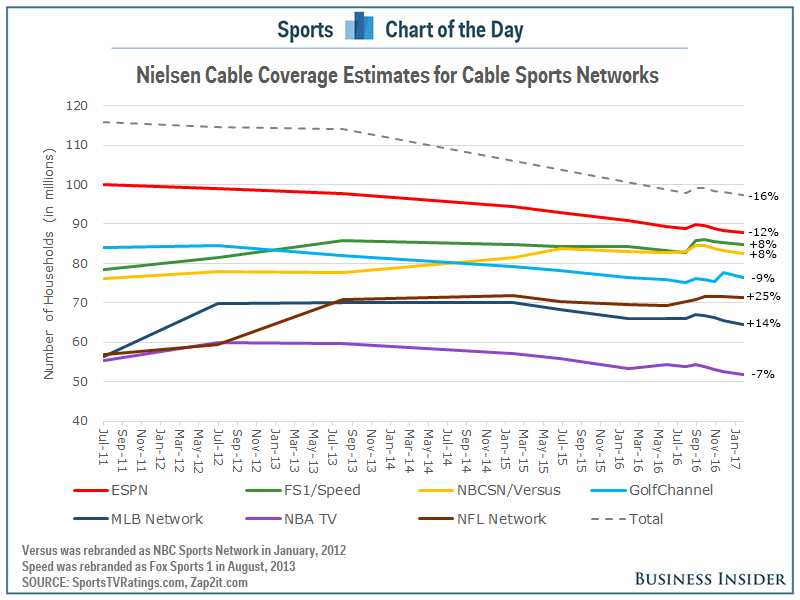In 2011, ESPN peaked when they topped 100 million subscribers. However, in the six years since then, their numbers have steadily fallen, down 12% to just under 88 million in the latest Nielsen estimates, according to Sports TV Ratings.
While that is not good, it is not as bad when put into perspective. During that same period, the number of cable subscribers has dropped at a faster rate, falling 16%, and the demand for ESPN appears to be stronger than ever.
ESPN’s subscriber fees, the amount cable and satellite providers pay to ESPN per subscriber, continues to rise. ESPN now charges $7.21 per subscriber, by far the most expensive cable network, and up 54% from what they were charging in 2011, when it cost $4.69 per subscriber.
Of course, ESPN’s massive subscriber fee is passed on to the bills of subscribers whether they watch ESPN or not. So ESPN is at least partly to blame for their own drop in subscribers. In addition, other sports networks have not been hurt as much as ESPN, and some (e.g. the NFL Network) have actually seen their subscriber base increase, albeit from far more modest levels.

Still, in the case of ESPN, it needs to be clear that there is a difference between subscribers and viewers. Nearly 90 million people subscribe to ESPN. Only a fraction of those people actually watch ESPN. And the number of people who watch ESPN appears to be as strong as ever and the importance of ESPN to the cable and satellite companies appears to be more important than ever.
NOW WATCH: The Olympic Park in Rio is a ghost town and its pools are turning green again













